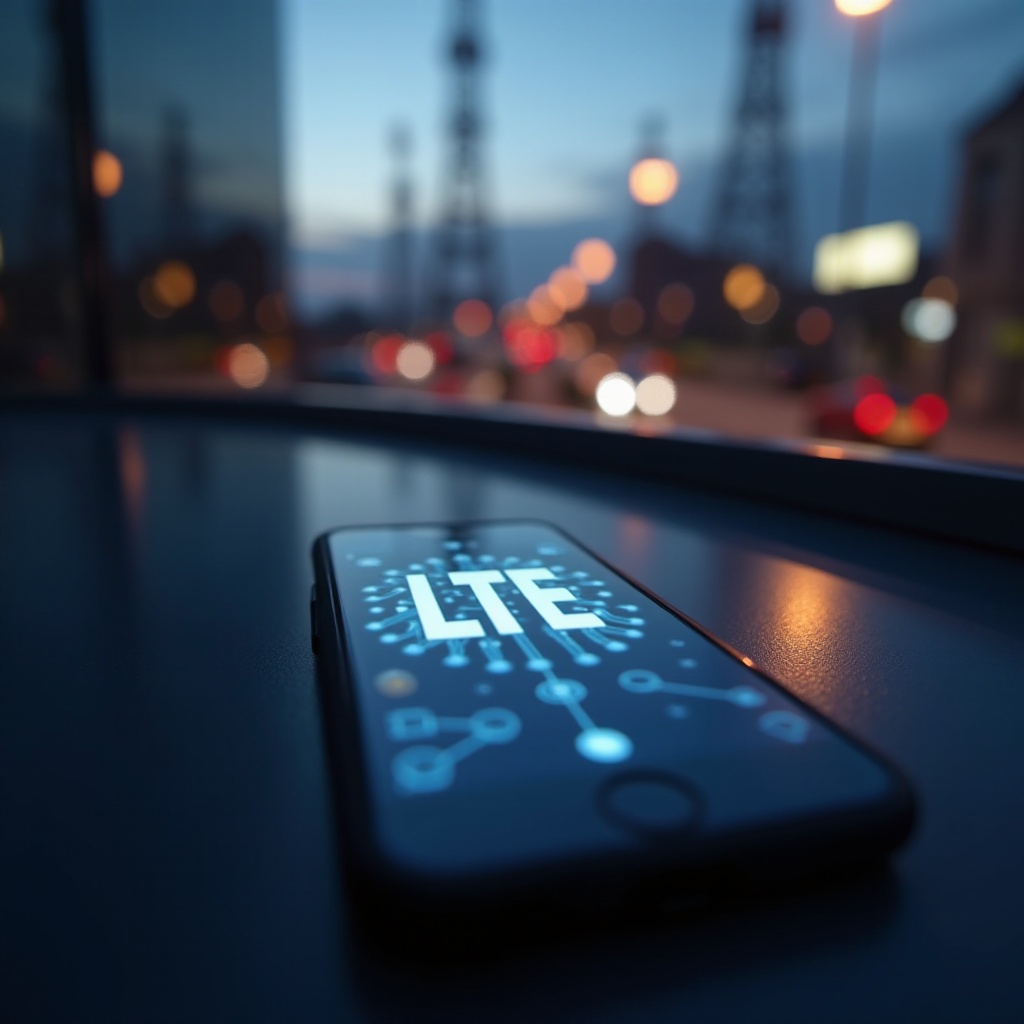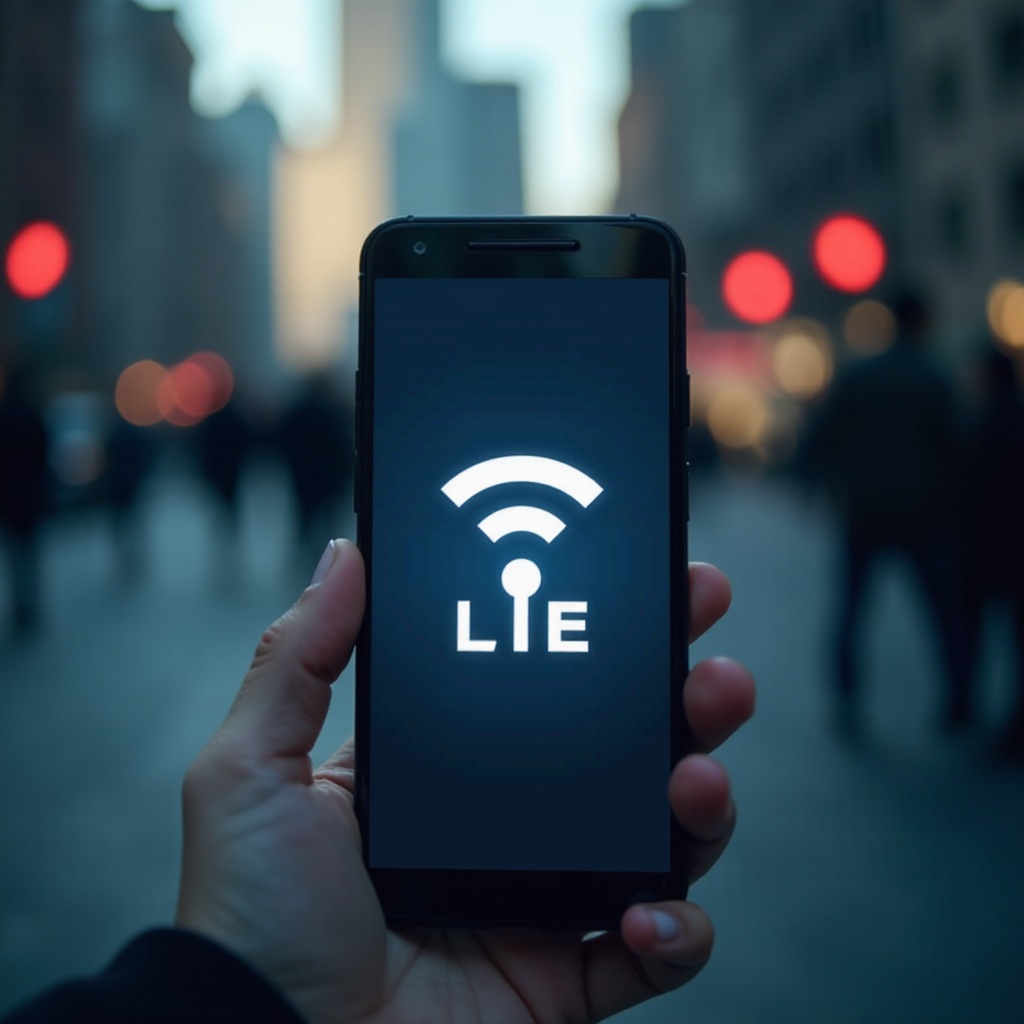Introduction
You’re eager to embrace the high-speed advantages of 5G, but your phone stubbornly sticks to LTE. With the allure of improved speed and connectivity, it’s natural to wonder, ‘Why is my phone on LTE and not 5G?’ Familiarizing yourself with the reasons behind this network choice can aid in troubleshooting and optimizing your mobile plan. This guide takes you into LTE, 5G, why your phone defaults to LTE, and provides troubleshooting tips to help you benefit from 5G technology.

Understanding LTE and 5G
To comprehend why your phone chooses LTE, it’s pivotal to understand both LTE and 5G technologies. LTE, standing for Long-Term Evolution, is labeled as 4G LTE and has served as a standard for a significant period. It offers consistent speed and extensive coverage. Conversely, 5G is the newest generation of mobile network technology, promising much faster data speeds and reduced latency. This network is highly regarded for innovations affecting sectors from mobile streaming to real-time gaming and autonomous vehicle communication.
While 5G offers substantial promise, its deployment is ongoing, and there are notable limitations compared to LTE. These include coverage variability and device/carrier constraints. Such limitations cause many phones to opt for LTE, which is more established and provides wider geographic coverage, acting as a reliable fallback when 5G isn’t optimal or available.

Why Your Phone Defaults to LTE
Now, let’s address why your device defaults to LTE.
Coverage Limitations
5G networks, although developing fast, aren’t universally established yet. While urban regions may have extensive 5G networks, rural and some suburban areas still heavily depend on LTE. The infrastructure for 5G is growing but not at LTE’s level. Hence, in areas with limited 5G reception, your phone automatically switches to LTE for more reliable connectivity.
Device Compatibility Issues
Not all phones are built to manage 5G technology. Older devices may lack 5G support, and even newer models can encounter compatibility issues with different 5G bands. Such conditions prompt your device to revert to LTE, which it is fully capable of handling.
Plan and Carrier Restrictions
Your mobile plan and carrier can determine if your phone can connect to 5G. Some plans may not include 5G access, or your carrier might have restricted 5G infrastructure in some regions. Under these circumstances, LTE becomes your primary network.
Transitioning to explore troubleshooting techniques, understanding these fundamental reasons helps you navigate moving towards a 5G experience.
Troubleshooting LTE Issues
If your phone stays on LTE when 5G is anticipated, troubleshooting can offer resolutions.
Checking for Software and Firmware Updates
- Confirm your device’s operating system is updated. Manufacturers often issue updates to fix connectivity issues, including those related to newer network technologies like 5G.
- Check your device’s settings for any pending software and firmware updates.
Resetting Network Settings on Your Device
A straightforward yet effective fix is resetting network settings:
- Head to ‘Settings’ on your phone.
- Choose ‘General Management’ or ‘System.
- Select ‘Reset’ and then ‘Reset Network Settings.
This will remove saved Wi-Fi networks, Bluetooth connections, and passwords but might clear bugs affecting network performance.
Ensuring Proper SIM Card Functionality
Your SIM card is crucial for network connectivity. Ensure it’s correctly installed and undamaged. A dated or faulty SIM card should be replaced with one that supports 5G to solve connectivity issues potentially.

Maximizing 5G Usage
To optimize 5G usage, you can undertake several actions:
Choosing the Correct Mobile Plan
Confirm if your plan grants 5G access. If not, consider upgrading to one customized for 5G connectivity. This ensures you aren’t missing out on 5G’s speed due to plan constraints.
Monitoring Carrier 5G Growth
Stay informed about your carrier’s 5G rollout plans. Being aware of expansions can guide decisions concerning network use and possible upgrades.
Transitioning towards maximized network usage, understanding troubleshooting techniques aids in making informed decisions about your mobile experience.
Conclusion
Engaging with 5G could revolutionize your mobile experience, but multiple factors might keep your phone on LTE. Recognizing why this occurs and navigating potential challenges enables you to enhance device connectivity. Whether through updates, resetting settings, or confirming compatibility, essential strategies move your device to the chosen network.
Frequently Asked Questions
How can I check if my area has 5G coverage?
You can check your area’s 5G coverage by visiting your carrier’s website or utilizing their network coverage maps. Apps like OpenSignal or Ookla Speedtest also provide detailed coverage maps.
Are there alternative solutions if 5G isn’t available in my area?
If 5G isn’t accessible, rely on fast Wi-Fi networks for augmented connectivity. Explore LTE-advanced options or discuss with your carrier other possibilities for enhanced internet solutions.
Will using 5G drain my battery faster compared to LTE?
Yes, 5G typically demands more battery due to high-speed capabilities and increased data activity. Manage this by regularly updating your OS for optimizations and using your device’s power-saving features.